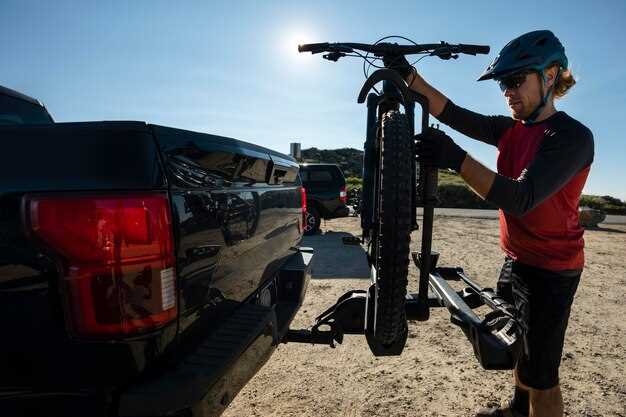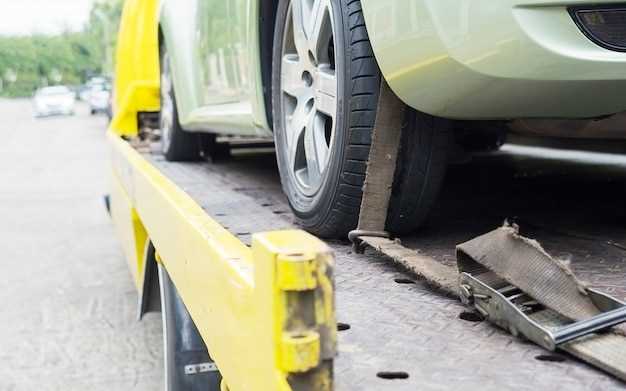
Installing a trailer hitch can seem daunting, but with the right tools and instructions, it can be accomplished easily at home. A trailer hitch not only facilitates towing but also expands the utility of your vehicle by allowing it to carry various accessories. Whether you’re planning to tow a boat, a camper, or simply need extra storage, knowing how to properly install a trailer hitch is essential.
This guide will walk you through the installation process step by step, ensuring that you can complete the task efficiently and safely. From selecting the right hitch for your vehicle to the final inspection, every phase of the installation will be covered. You’ll gain an understanding of the necessary tools, safety precautions, and techniques to make the process as smooth as possible.
Before diving into the installation, it’s crucial to familiarize yourself with your vehicle’s specifications and the type of hitch that best suits your needs. Different hitches are designed for varying weights and applications, so selecting the correct one is vital for both safety and performance. Let’s get started on this journey to enhance your vehicle’s capabilities!
Choosing the Right Trailer Hitch for Your Vehicle
Selecting the appropriate trailer hitch for your vehicle is crucial for ensuring safety and functionality while towing. Begin by identifying the towing capacity of your vehicle, which is typically found in the owner’s manual. This capacity dictates the maximum weight your vehicle can tow, including the trailer and its cargo.
Next, consider the hitch class. Trailer hitches are classified from I to V, with Class I being suitable for light loads (up to 2,000 lbs) and Class V designed for heavy-duty towing (over 10,000 lbs). Choose a class that meets or exceeds your towing requirements.
The hitch receiver size is another important factor. Common sizes include 1.25 inches and 2 inches. A larger receiver allows for increased towing capacity and provides compatibility with more accessories, such as bike racks or cargo carriers.
Additionally, assess the trailer type you plan to tow. Different trailers, such as utility, boat, or camper trailers, may require specific hitches or additional components like a weight distribution hitch or a sway control system for stability during towing.
Finally, consider installation requirements. Some hitches can be added without professional help, while others may necessitate drilling or modifications to your vehicle. Verify whether you can manage the installation or if you need expert assistance.
By evaluating your vehicle’s towing capacity, hitch class, receiver size, trailer type, and installation needs, you can confidently select the right trailer hitch that will meet your requirements and enhance your towing experience.
Tools and Materials Needed for Installation

To successfully install a trailer hitch, you’ll need a specific set of tools and materials. Having everything ready before you begin will make the installation process smoother and more efficient.
Tools:
- Socket Set: A complete socket set, including both standard and metric sizes, will be essential for loosening and tightening bolts.
- Wrench Set: Combination wrenches will help with hard-to-reach bolts that a socket may not fit around.
- Torque Wrench: This tool ensures that bolts are tightened to the manufacturer’s specified torque settings, preventing damage or failure.
- Drill and Drill Bits: A power drill will be necessary if any new holes need to be made in the vehicle’s frame for mounting the hitch.
- Hammer: A rubber mallet or hammer can help adjust or align the hitch during installation.
- Cutter and File: Use cutting tools for any excess material and files to smooth rough edges if modifications are necessary.
- Level: To ensure that the hitch is installed evenly and at the correct angle.
- Safety Glasses and Gloves: Protect your eyes and hands during installation to avoid injury.
Materials:
- Trailer Hitch Kit: This should include the hitch receiver, ball mount, and necessary mounting hardware such as bolts and washers.
- Electrical Wiring Kit: If your trailer requires lights, ensure you have the correct wiring kit to connect the trailer’s electrical system to your vehicle.
- Paint or Rust Treatment: To protect the hitch from rust and corrosion after installation, consider applying a suitable rust-proof paint.
Gathering the right tools and materials beforehand eliminates delays and helps ensure a successful installation. Check your specific hitch installation guide for any additional requirements unique to your vehicle model.
Step-by-Step Installation Process for Your Trailer Hitch

Installing a trailer hitch can seem daunting, but with the right tools and guidance, it can be a manageable task. Follow these steps to ensure a successful installation.
Step 1: Gather Tools and Materials
Before starting, collect all necessary tools and materials. You will need a socket wrench set, a torque wrench, a drill with appropriate bits, pliers, and the trailer hitch kit, which typically includes the hitch, mounting brackets, and hardware.
Step 2: Prepare Your Vehicle
Park your vehicle on a flat surface, set the parking brake, and disconnect the battery to avoid any electrical issues during installation. Remove any existing tow accessories that may interfere with the hitch installation.
Step 3: Locate the Installation Points
Refer to the installation instructions provided with your trailer hitch. Most hitches will have predefined mounting points on the vehicle’s frame. Use a flashlight if needed to clearly identify these locations.
Step 4: Position the Hitch
With the help of a friend, lift the hitch into position. Align it with the mounting holes on your vehicle’s frame. Ensure that it is level and fits snugly against the frame. This is crucial for proper weight distribution and stability when towing.
Step 5: Attach the Hitch
Using the provided bolts and washers, secure the hitch to the vehicle. Insert each bolt through the hitch and into the mounting points on the frame. Hand-tighten the bolts to hold the hitch in place while you align it correctly.
Step 6: Drill Additional Holes (If Necessary)
If the installation instructions indicate the need for additional mounting holes, mark the drill points carefully. Use a drill to create the holes, making sure to follow the size specifications provided in the hitch kit instructions. Clean any debris from the drilled holes before proceeding.
Step 7: Tighten Bolts
Once everything is aligned, use your torque wrench to tighten the bolts according to the specifications listed in your installation manual. This ensures that the hitch is securely fastened and can handle the towing load. Double-check all connections for security.
Step 8: Reconnect Battery and Test
After all bolts are tightened, reconnect your vehicle’s battery. If your hitch includes any wiring for tail lights or brakes, connect these according to the kit instructions. Once connected, test the system to ensure everything is functioning correctly.
Step 9: Final Inspection
Perform a thorough inspection of the installation. Make sure there are no loose components and that the hitch appears stable. If applicable, double-check the wiring connections for proper fit and finish.
Step 10: Ready to Tow
Once you have completed the installation and tested everything, your vehicle is now ready to tow. Always remember to refer to your vehicle’s towing capacity and adhere to safety guidelines when using your new trailer hitch.


